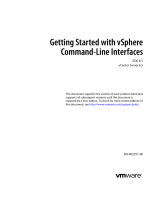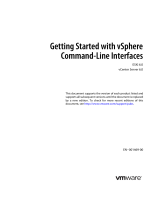Page is loading ...

2018.05
Aeroscope
SDK Linux
V1.0
User Guide

1
©
2018 DJI All Rights Reserved.
Contents
Introduction
2
Purpose
2
IntendedAudience
2
Legends
2
References
2
AbbreviationsandTerms
2
AeroscopeSDKPackage
3
Installation
4
EnvironmentalRequirements
4
SDKPackageExtractionandRuntimeLibraryDeployment
4
RunningExamples
4
MainProcessesandAPIs
5
MainProcesses
5
APIsforSendingandReceivingData
5
APIsforManagingAeroscope'sDigitalCertificates
5
DataAnalysis
6
MsgId
6
MsgType
7
TransmittingPacketDataStructures
7

©
2018 DJI All Rights Reserved.
2
Introduction
Purpose
AEROSCOPE
TM
SDK is a software development kit that provides application programming
interfaces (APIs) to help users build a server with an Aeroscope unit.
This manual provides a simple guide for SDK users, allowing users to quickly understand the
SDK and its main processes and APIs.
Intended Audience
This document is intended for users who are building their own server with an Aeroscope unit.
Legends
i Important
! Warning
X Error
References
File Name Description
UavMonitorSdkLinux_Reference.chm
Aeroscope SDK Reference Manual
(English Version):
Provides a detailed reference for all APIs.
Included in the SDK package's Help directory.
Abbreviations and Terms
Term Description
Aeroscope A UAV detection system to identify, track, and monitor airborne drones.
API Application Programming Interface
SDK Software Development Kit
SSL Secure Sockets Layer, a network security protocol
UAV Unmanned Aerial Vehicle

3
©
2018 DJI All Rights Reserved.
Aeroscope SDK Package
The Aeroscope SDK package is provided as a ZIP le.
The directory structure after extraction is as follows:
UavMonitorSdkLinux_V1.n.nn.nnn
├─ Help
│ └─ html
├─ lib
├─ UavMonitorSdk
└─ UavMonitorSdkExample
The detailed directory and le contents are as follows:
UavMonitorSdkLinux_V1.n.nn.nnn
├─ Help
│ │ UavMonitorSdkLinux_V1.n.nn.nnn_Reference.chm
│ │ UavMonitorSdkLinux_V1.n.nn.nnn
参考手册
.chm
│ │
│ └─ html
│ annotated.htm
│ … (More files)
│ index.htm
│ …(More files)
├─ lib
│ libcrypto.so
│ libssl.so
│ libUavMonitorSdk.so
│ openssl.lic
│
├─ UavMonitorSdk
│ build_env_ver.txt
│ UavMonitorSdkApi.h
│ UavMonitorSdkMsg.h
│ ZytPal.h
│
└─ UavMonitorSdkExample
main.cpp
UavMonitorSdkExample.pro
UavMonitorSdkExample.pro.user

©
2018 DJI All Rights Reserved.
4
Aeroscope SDK Linux
Descriptions for the main folders in the directory are as follows:
Folder Description
Help This folder contains Help les, including the reference manual.
lib
This folder contains the SDK's shared library les (*.so), which
need to be copied to the corresponding "lib" directory of the
Linux system.
UavMonitorSdk This folder contains the SDK's API-dened header les.
UavMonitorSdkExample This folder contains an SDK application example.
Installation
Environmental Requirements
Refer to the "build_env_ver.txt" le in the "lib" folder of the SDK package for details about the
Linux SDK’s production, installation, and operation environments.
The following shows an example of a "build_env_ver.txt" le:
Linux ubuntu 3.13.0-32-generic #57-Ubuntu SMP Tue Jul 15 03:51:08 UTC 2014 x86_64
x86_64 x86_64 GNU/Linux
gcc (Ubuntu 4.8.4-2ubuntu1~14.04.3) 4.8.4
Qt Creator 3.0.1 based on Qt 5.2.1
OpenSSL 1.1.0f 25 May 2017
SDK Package Extraction and Runtime Library Deployment
Extract the SDK package and copy the runtime les to the system's run directory.
For example:
Copy the SDK's shared library les (*.so) to the "/usr/lib" directory.
Running Examples
The application example source code is in the "UavMonitorSdkExample" directory of the SDK
package.
Open "UavMonitorSdkExample.pro" with QT Creator, compile, and run.

5
©
2018 DJI All Rights Reserved.
Main Processes and APIs
Main Processes
The following APIs are used for the processes described in the table:
API Description
InitSdk Initializes the SDK.
InitUavMonitorListenerCer
Congures the digital certicate and CA certicate for the
receiving server of the SDK.
StartUavMonitorListener
Species the server TCP port and the application's data
processing callback function, then starts the receiving server.
StopUavMonitorListener Turns off the receiving server.
ExitSdk Exits the SDK and cleans up the environment.
You can refer to the Aeroscope SDK Reference Manual for details of example source code
and further descriptions of the APIs.
APIs for Sending and Receiving Data
To send data to a specied unit, you can use the SendToDevice API.
There are two ways to receive data:
• Callback function
• Polling
If a callback function is set when calling StartUavMonitorListener, a callback function is used.
Otherwise, if StartUavMonitorListener passes a null pointer to the callback function parameter,
polling is used. To receive data from all units through polling, use the ReceiveFromDevice
API.
APIs for Managing Aeroscope's Digital Certicates
Congure the Aeroscope's digital certicate to manage whether the unit is allowed to access
the receiving server.
The following APIs can be used to manage the digital certicates of Aeroscope:
API Description
AddUavMonitorCer
Add an Aeroscope certicate to allow this unit to access the
receiving server.
DelUavMonitorCer
Delete an Aeroscope certicate, preventing this unit from
accessing the receiving server.
SetUavMonitorCer
Modify an Aeroscope certicate, which means that the unit
must use the new certicate the next time to access the
receiving server.

©
2018 DJI All Rights Reserved.
6
Data Analysis
MsgId
enum EIoMessageId
{
eimiIdNone, ///< 0
eimiIdUavInfoInd, ///< 1, Device -> UAV Information Ind -> Server
eimiIdDeviceStatusInd, ///< 2, Device -> Device Status Ind -> Server
eimiIdReadDeviceSetting, ///< 3, Server -> ServerToDeviceReq -> Device ->
ServerToDeviceAck -> Server
eimiIdWriteDeviceSetting, ///< 4, Server -> ServerToDeviceReq -> Device ->
ServerToDeviceAck -> Server
eimiIdDeviceStatusLogInd, ///< 5, Device -> Device Status Log Ind -> Server
eimiIdScanFreqResultInd, ///< 6, Device -> ScanFreq Result Status Ind ->
Server
eimiIdDeviceBistInd, ///< 7, Device -> Device Bist Ind -> Server
eimiIdDevMacSetting, ///< 8, Server -> ServerToDeviceReq -> Device ->
ServerToDeviceAck -> Server
eimiIdDevVersion, ///< 9, Server -> ServerToDeviceReq -> Device ->
ServerToDeviceAck -> Server
eimiId2DeviceHeartBeatInd, ///< 10, Server -> ServerToDeviceReq -> Device
eimiIdEnterUpgradeMode, ///< 11, Server -> ServerToDeviceReq -> Device ->
ServerToDeviceAck -> Server
eimiIdReceiveFirmwareDataTransferMode, / / / < 1 2 , S e r v e r - >
ServerToDeviceReq -> Device -> ServerToDeviceAck -> Server
eimiIdFirmwareDataTransfer, ///< 13, Server -> ServerToDeviceReq -> Device ->
ServerToDeviceAck -> Server
eimiIdFirmwareTransferDone, ///< 14, Server -> ServerToDeviceReq -> Device ->
ServerToDeviceAck -> Server
eimiIdDevReboot, ///< 15, Server -> ServerToDeviceReq -> Device ->
ServerToDeviceAck -> Server
eimiIdFirmwareUpgradeControl, ///< 16, Server -> ServerToDeviceReq ->
Device -> ServerToDeviceAck -> Server
eimiIdFirmwareUpgradeStatusInd, ///< 17, Device -> Device Firmware
Upgrade Status Ind -> Server
eimiIdClientCertValidInd, ///< 18, Device -> Device Cert Valid Ind -> Server
eimiIdClientSnInvalidInd, ///< 19, Device -> Device SN Invalid Ind -> Server
eimiIdClientNotMatchInd, ///< 20, Device -> Device SN Not Match Ind -> Server
eimiIdGetVersionOrLog, ///< 21, Server -> ServerToDeviceReq -> Device ->
ServerToDeviceAck -> Server
eimiIdDeviceFirwareConsUpgradeInd, ///< 22, Device -> Device Firmware
consistency upgrade Ind -> Server
eimiIdNum ///< maximum
};

7
©
2018 DJI All Rights Reserved.
Aeroscope SDK Linux
MsgType
enum EIoMessageType
{
eimtTypeNone, ///< 0
/// Request from Server to Device
eimtTypeServerToDeviceReq, ///< 1, Server -> Req -> Device
eimtTypeServerToDeviceAck, ///< 2, Server <- Ack <- Device
eimtTypeServerToDeviceTimeout, ///< 3, Server <- ServerToDeviceReq
Timeout <- SDK
eimtTypeServerToDeviceError, ///< 4, Server <- ServerToDeviceReq Error
<- SDK
/// Request from Device to Server
eimtTypeDeviceToServerReq, ///< 5, Device -> Req -> Server
eimtTypeDeviceToServerAck, ///< 6, Device <- Ack <- Server
eimtTypeDeviceToServerError, ///< 7, SDK <- Error <- Server
/// Indication from Device to Server
eimtTypeDeviceToServerInd, ///< 8, Device -> Ind -> Server
// Indication from Server to Device
eimtTypeServerToDeviceInd, ///< 9, Server -> Ind -> Device
/// Device Management from SDK to Server
eimtTypeDeviceArrival, ///< 10, SDK -> Device Arrival -> Server
eimtTypeDeviceRemoval, ///< 11, SDK -> Device Removal -> Server
eimtTypeDeviceFailure, ///< 12, SDK -> Device Failure -> Server
eimtTypeDeviceRecovery, ///< 13, SDK -> Device Recovery -> Server
/// SDK Management from Server to Device
eimtTypeSdkError, ///< 14, SDK -> Error -> Server
eimtTypeSdkIoControlReq, ///< 15, Server -> IO Control Req -> SDK
eimtTypeSdkIoControlAck, ///< 16, Server <- IO Control Ack <- SDK
eimtTypeNum ///< maximum
};
Transmitting Packet Data Structures
Not yet available.

Printed in China.
©
2018 DJI All Rights Reserved.
This content is subject to change.
Download the latest version from
http://www.dji.com/aeroscope
If you have any questions about this document, please contact DJI by
sending a message to
.
/

